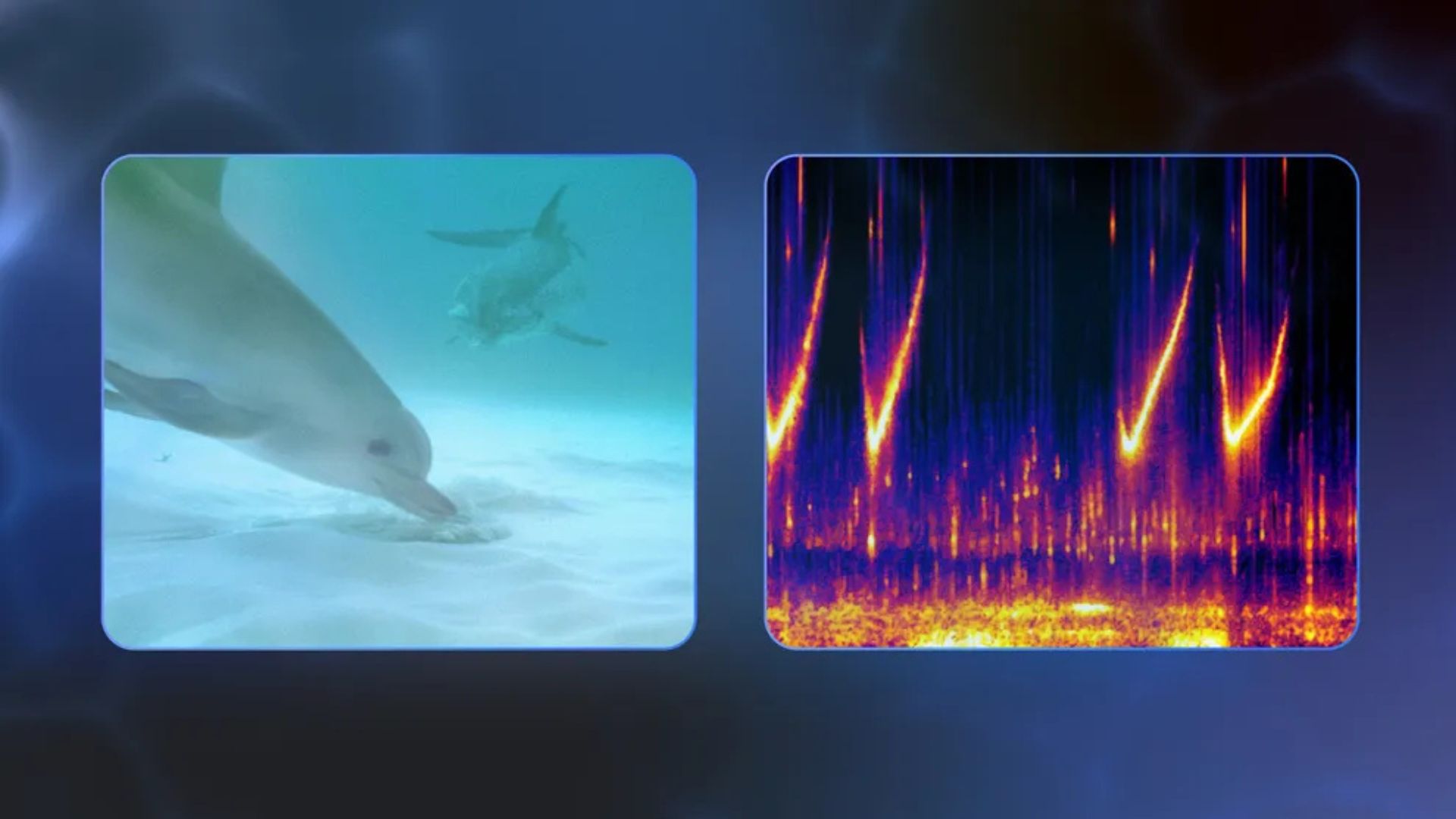Apple Watch Series 9 vs. Samsung Galaxy Watch 6
Both watches upgraded their performance and displays while keeping similar designs to past generations.
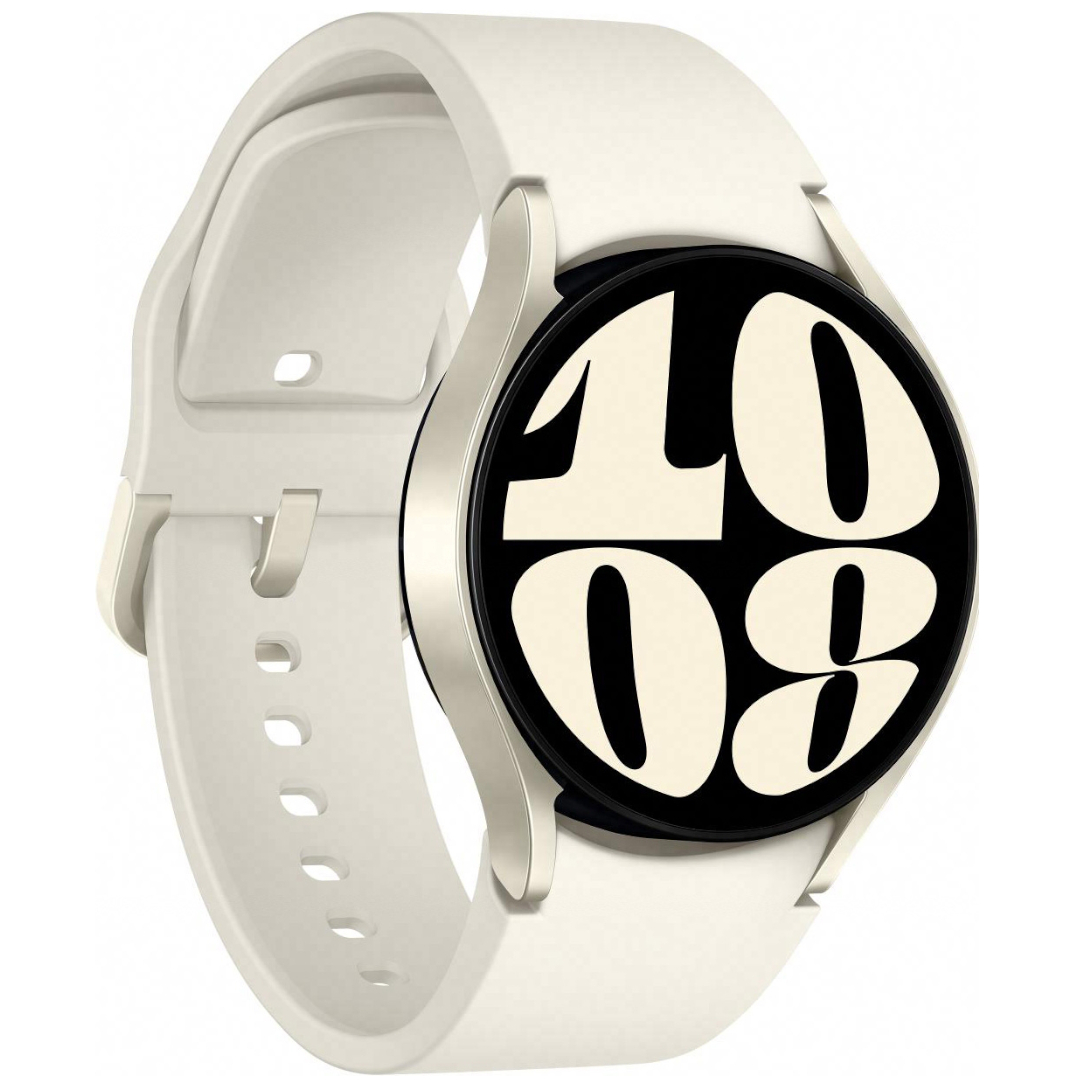
Newer, better
The Galaxy Watch 6 took the Watch 5 template and added a new Exynos chip, more RAM, and a larger, brighter display without getting any larger. It has better battery life and a more durable design than the Apple Watch, plus a more affordable price (unless you buy the Watch 6 Classic).
For
- Longer battery life
- Military-grade protection
- Thinner, lighter design
- More RAM
- Cheaper list price
Against
- Touch bezel instead of crown
- Only 16GB storage
- Fewer fitness tools
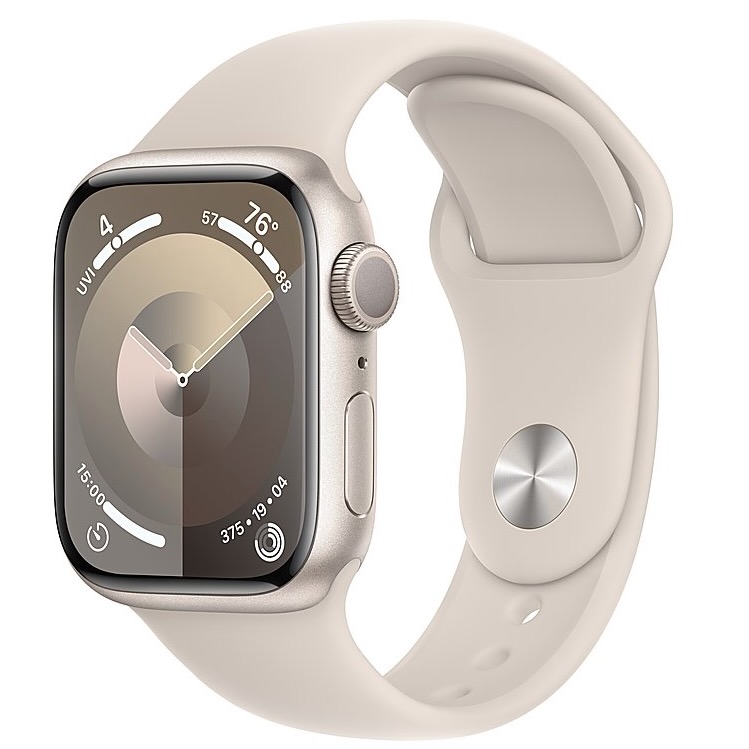
Next-gen performance
Don't let its identical design fool you. The Apple Watch Series 9 has a new, faster chip for the first time in four generations, plus a twice-as-bright display and a whopping 64GB of storage. It still has that unfortunate 18-hour battery life, but at least its fast charging mitigates the problem.
For
- Rotating crown
- Quadruple the storage
- Longer software support
- Ultra Wideband
- On-device Siri commands
Against
- Short battery life
- More expensive
- Less durable design
The Apple Watch Series 9 and Galaxy Watch 6 both look remarkably close to their predecessors, only with some significant performance boosts and software updates under the hood.
Still, generally speaking, this is basically the same battle we've seen since Samsung switched to Wear OS. It's the best (or only) Apple Watch versus the best Android watch, and each has strengths and weaknesses that have persisted across generations. There aren't many surprises here.
Still, if you're a smartwatch fan considering switching ecosystems, or if you just want the satisfaction of knowing your favorite brand "wins" this battle, read on to see how the Apple Watch Series 9 vs. Samsung Galaxy Watch 6 compare.
Apple Watch Series 9 vs. Samsung Galaxy Watch 6: Display and battery
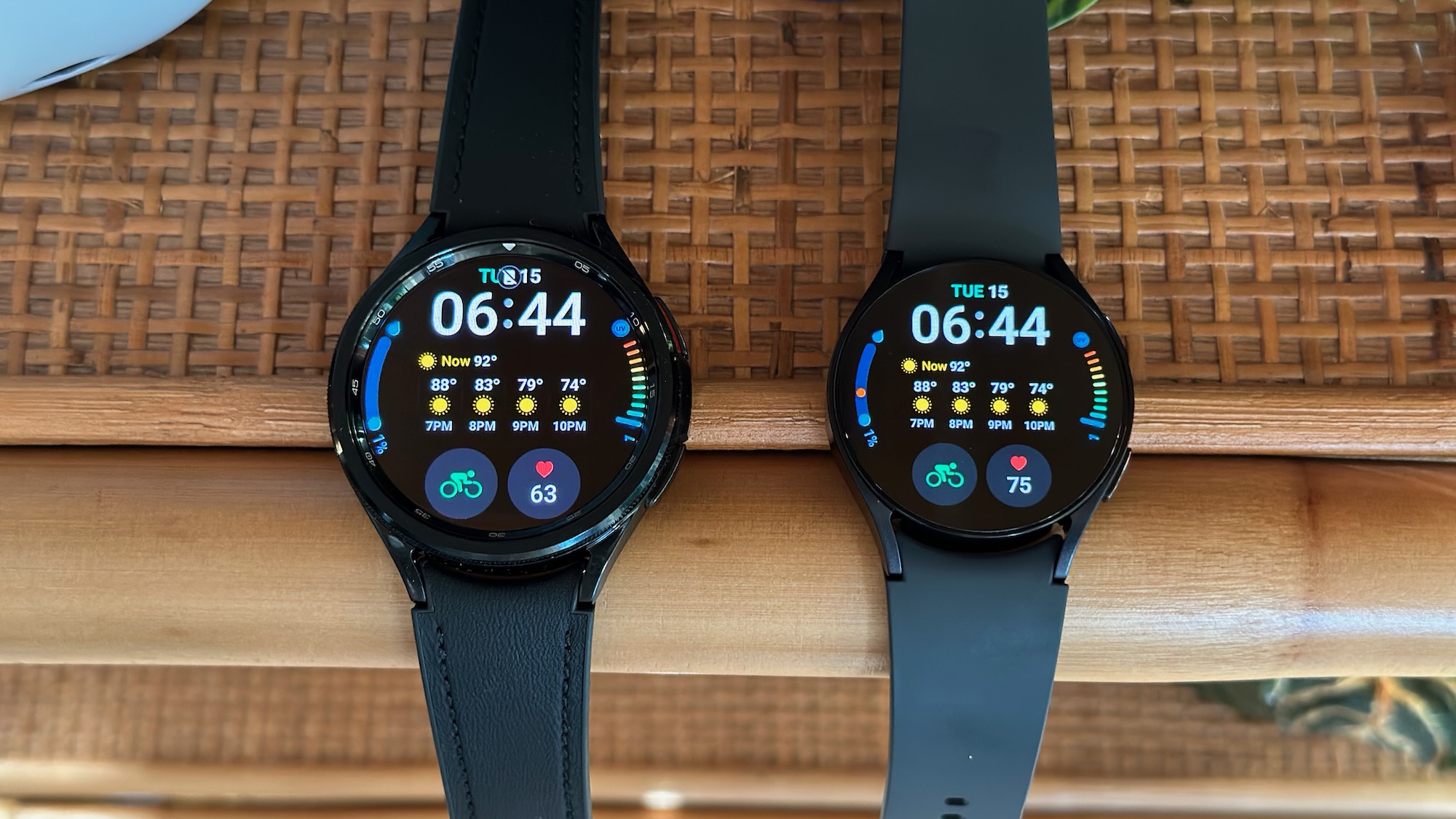
Apple's display size and resolution have remained unchanged since the Series 7, when it shrunk the display border to the very edge. You're choosing between a 1.6-inch (352x430) or 1.8-inch (396x484) LTPO OLED display with the same pixels per inch (about 326).
The Samsung Galaxy Watch 6 and Watch 6 Classic come in two display sizes: 1.3-inch (432 x 432) and 1.5-inch (480x480). Even though the inch sizes are "smaller" than Apple's, the pixels per inch are near-identical between them. And like Apple's Series 7, the Galaxy Watch 6 shrunk the display border compared to the Watch 5, giving you an extra 0.1-inch of screen for either size and leaving little wasted space.
Samsung had the edge over the Series 8 with its 2,000-nit brightness, but now Apple has matched that number with the Series 9. Both are perfectly readable and colorful outdoors in fully sunny conditions; the only thing to note is that prolonged high-brightness use will burn through the battery, which may affect Apple's watch more than Samsung's.
With both watches fixing their display weak points, you essentially have to decide if you prefer a squircle or circular design. The Apple Watch display more easily shows lots of data without it getting cut off at the corners; some see its design as a status symbol, while others think it looks cheap.
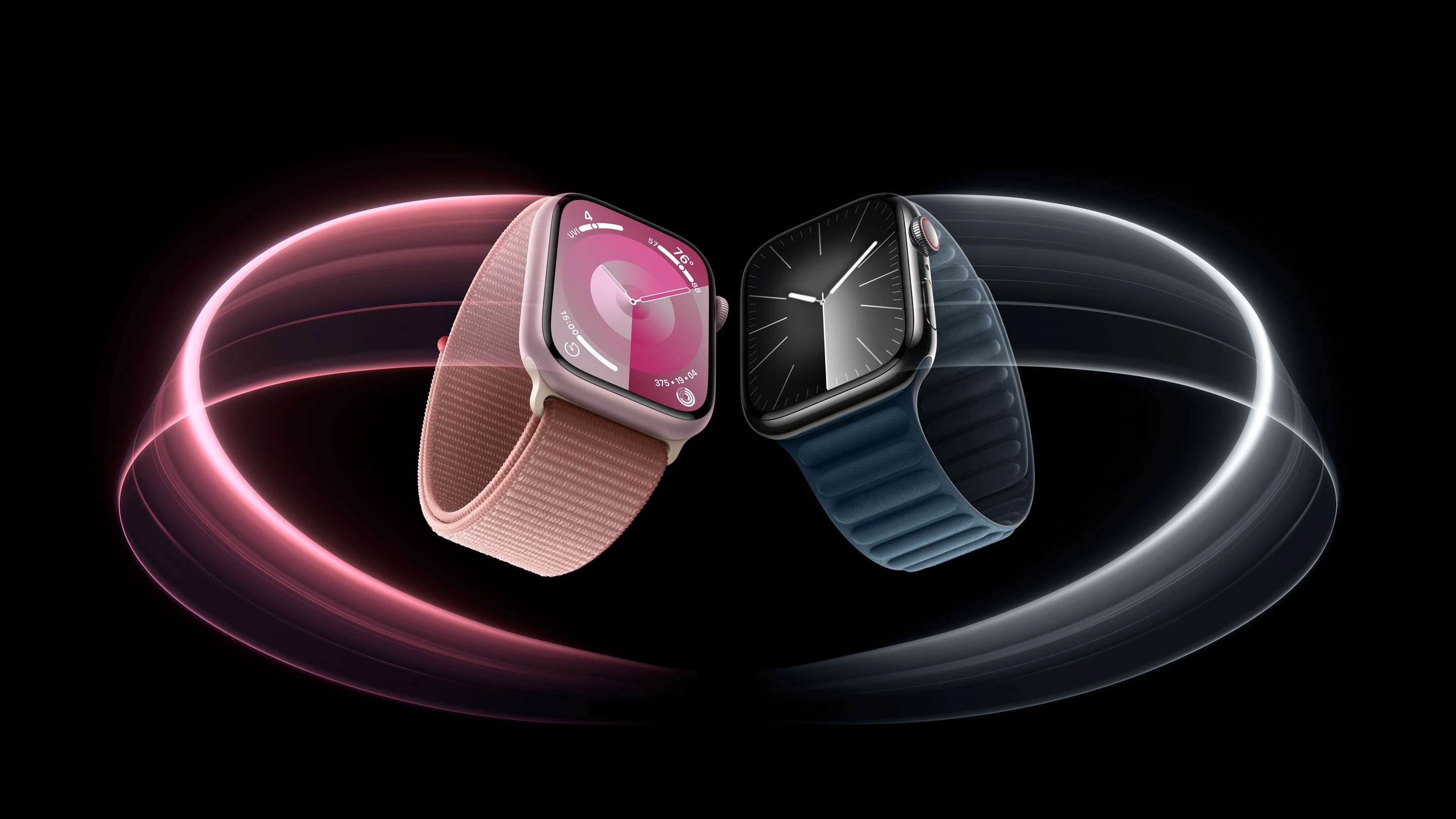
The Galaxy Watch 6 display has a traditional look, along with a capacitive bezel along the edge for scrolling through apps with your finger. Our reviewer was impressed at how responsive it was compared to the last generation, but you still have to accept the lack of a physical bezel or crown for more precise controls.
Both watches have an Always-On Display (AOD) setting with a low, battery-saving refresh rate. Samsung estimates the Galaxy Watch 6 lasts 30 hours with AOD active, whereas the Series 9 maxes out at 18 without it and has no AOD estimate.
Apple does say that the Series 9 will last 11 hours playing stored music files or seven hours with GPS tracking; we're currently reviewing the Series 9 to see how this holds up, but real-world use may be lower. In terms of active, heavy-duty activities like this, the Galaxy Watch 6 doesn't have as much of an edge. In fact, an hour of GPS activity typically burned through about 20–25% of the battery in our reviewer's tests. It simply lasts longer as a stand-by device.
Thankfully, whichever watch you choose, you're getting quite fast charging. The Galaxy Watch 6 can go from 0 to 50% in 30 minutes, 75% in 45 minutes, or 100% in about 75 minutes. The Apple Watch Series 9 hits 80% in 45 minutes or 100% in 75 minutes.
Apple Watch Series 9 vs. Samsung Galaxy Watch 6: Hardware, sensors, and design
| Category | Samsung Galaxy Watch 6 | Apple Watch Series 9 |
|---|---|---|
| Display | 1.3-inch (432x432), 1.5-inch (480x480) Super AMOLED | 1.6-inch (352x430), 1.8-inch (396x484) Retina LTPO OLED |
| Brightness | 2,000 nits | 2,000 nits |
| Processor | Samsung Exynos W930 (1.4GHz) | S9 SiP (64-bit, 4-core neural engine) |
| RAM | 2GB | Unknown |
| Storage | 16GB | 64GB |
| Navigation | Touchscreen, two buttons, digital bezel | Touchscreen, one crown, one button |
| Battery | 300mAh or 425mAh; Up to 40 hours | 282mAh or 308mAh; Up to 18 hours |
| Wireless charging | Yes | Yes |
| Sensors | Samsung BioActive Sensor (Optical Heart Rate + Electrical Heart Signal + Bioelectrical Impedance Analysis), Temperature Sensor, Accelerometer, Barometer, Gyro Sensor, Geomagnetic Sensor, Light Sensor | Accelerometer, ambient light, barometer/altimeter, compass, ECG, gyroscope, heart rate monitor, pulse oximeter, thermometer |
| Connectivity | LTE (optional), Bluetooth 5.3, Wi-Fi 2.4/5GHz, NFC, GPS/ GLONASS/ GALILEO/ Beidou | LTE (optional), GPS, GLONASS, GALILEO, BeiDou, QZSS, Bluetooth 5.3, Wi-Fi, NFC, UWB 2 |
| Compatibility | Android (Google Assistant or Bixby) | iOS (Siri) |
| Durability | 5ATM, IP68, MIL-STD-810H, Sapphire Glass | IP6X, WR50, Ion-X front glass |
| Materials | Aluminum | Aluminum or stainless steel |
| Dimensions | 38.8 x 40.4 x 9.0 mm; 42.8 x 44.4 x 9.0 mm | 41 x 35 x 10.7mm; 45 x 38 x 10.7mm |
| Weight (w/out strap) | 28.7g or 33.3g | 31.9g or 38.7g (aluminum) |
| Colors | Graphite, Gold (40mm); Graphite, Silver (44mm) | Midnight, Starlight, Silver, Pink (PRODUCT)RED |
Both the Galaxy Watch 6 and Apple Watch Series 9 received new processors with this generation after using the same hardware for the last couple of generations. Unlike phone processors, though, it's difficult to benchmark performance for watches, so it's difficult to say if either is "faster" than the other.
Compared to the Galaxy Watch 5, the Watch 6 has 33% more RAM and a faster clock speed (1.4GHz vs. 1.18GHz), which Samsung says lets you switch between apps 25% faster. As for Apple, the new S9 chip "can process machine learning tasks up to twice as fast" thanks to the new neural core, along with a 30%-faster GPU and 60% more transistors than the Watch 8 CPU.
Beyond all the inscrutable tech-speak, there are two key takeaways here. One: both Apple and Samsung wait several generations between CPU updates, so buying either one means you won't miss out on better performance down the line. And two: you're getting a virtually lag-free experience whichever smartwatch you choose. Our Galaxy Watch 6 reviewer was very impressed with its performance, and while we haven't reviewed the Series 9 yet, the Series 8 performed very well despite using an old chip.
There's only one key hardware point where the Apple Watch Series 9 easily beats the Galaxy Watch 6: storage. Samsung has stuck to 16GB since the Galaxy Watch 4, whereas Apple jumped from 32GB last generation to 64GB with the Series 9. You may not need a ton of watch storage, but the Apple Watch is better if you're someone who downloads gigabytes of music, podcasts, or audiobooks to your watch and streams it through wireless earbuds.
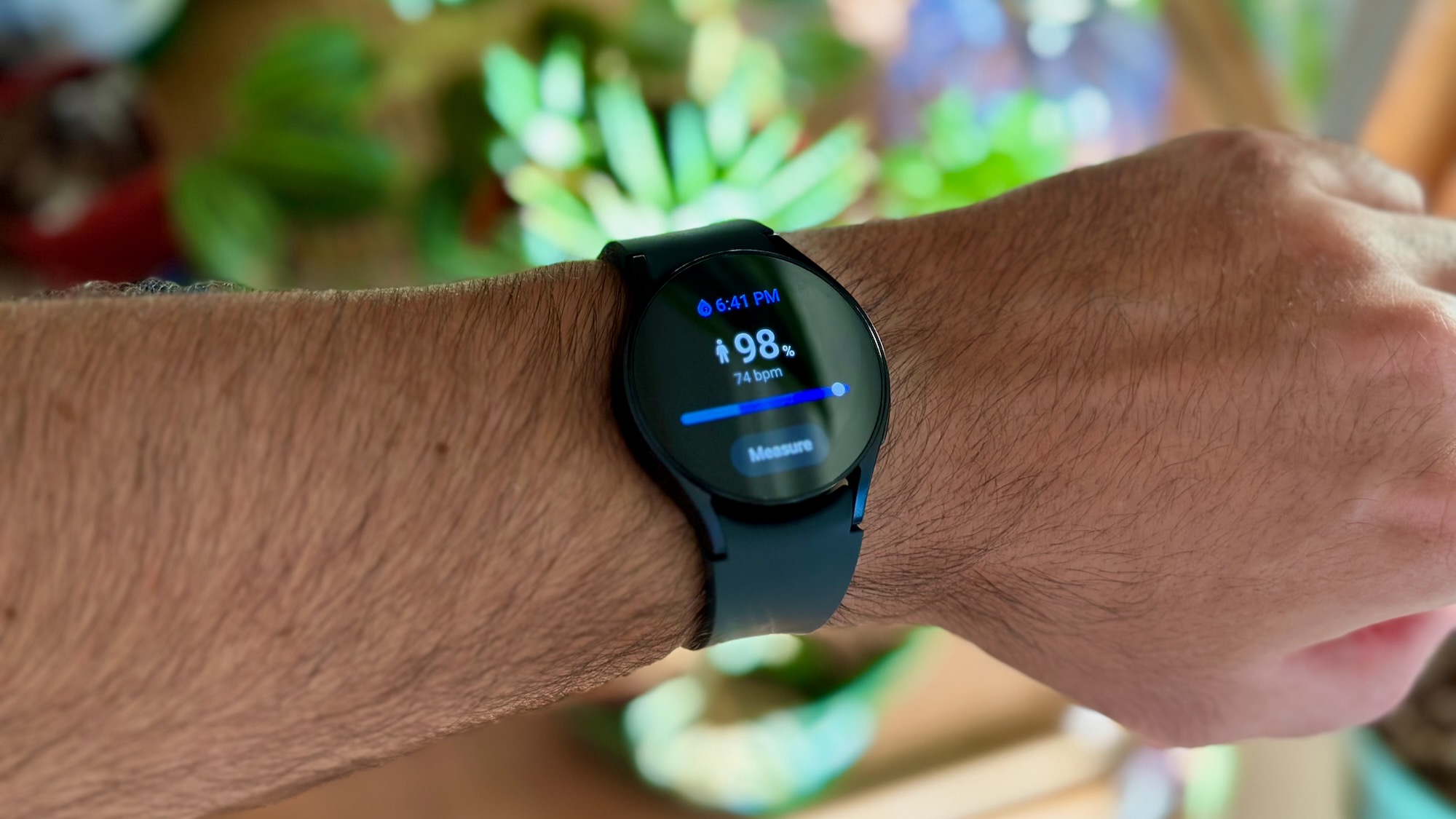
Performance aside, both watches share most of the same connectivity standards, health sensors, GPS tracking, and so on.
Both the Galaxy Watch 6 and Apple Watch Series 9 have heart rate sensors with passive AFib detection, ECG sensors with active AFib detection, and pulse oxygen and skin temperature readings for monitoring health and sleep quality. Samsung's one exclusive is the BIA sensor for measuring body composition, though our reviewer found that it didn't always give accurate body fat percentages compared to a smart scale.
Both also sport the same satellite systems, including L1 GPS signals. Unfortunately, neither watch has dual-frequency tracking for more accurate tracking, though Apple uses Apple Maps data to try and correct your workout map summaries.
Beyond that, each watch has an accelerometer and gyroscope for tracking wrist movement, an altimeter for elevation, a compass for following directions, and an ambient light sensor for adjusting screen brightness to your surroundings.
Both watches come with Bluetooth 5.3, basic Wi-Fi connectivity for downloads, NFC for mobile payments with their respective Wallet apps, and an optional upgrade to LTE with all the usual carriers. Only the Apple Watch has Ultra Wideband, which you can use for Precision Finding with your iPhone if the Apple Watch goes missing.
Apple Watch Series 9 vs. Samsung Galaxy Watch 6: Software and features
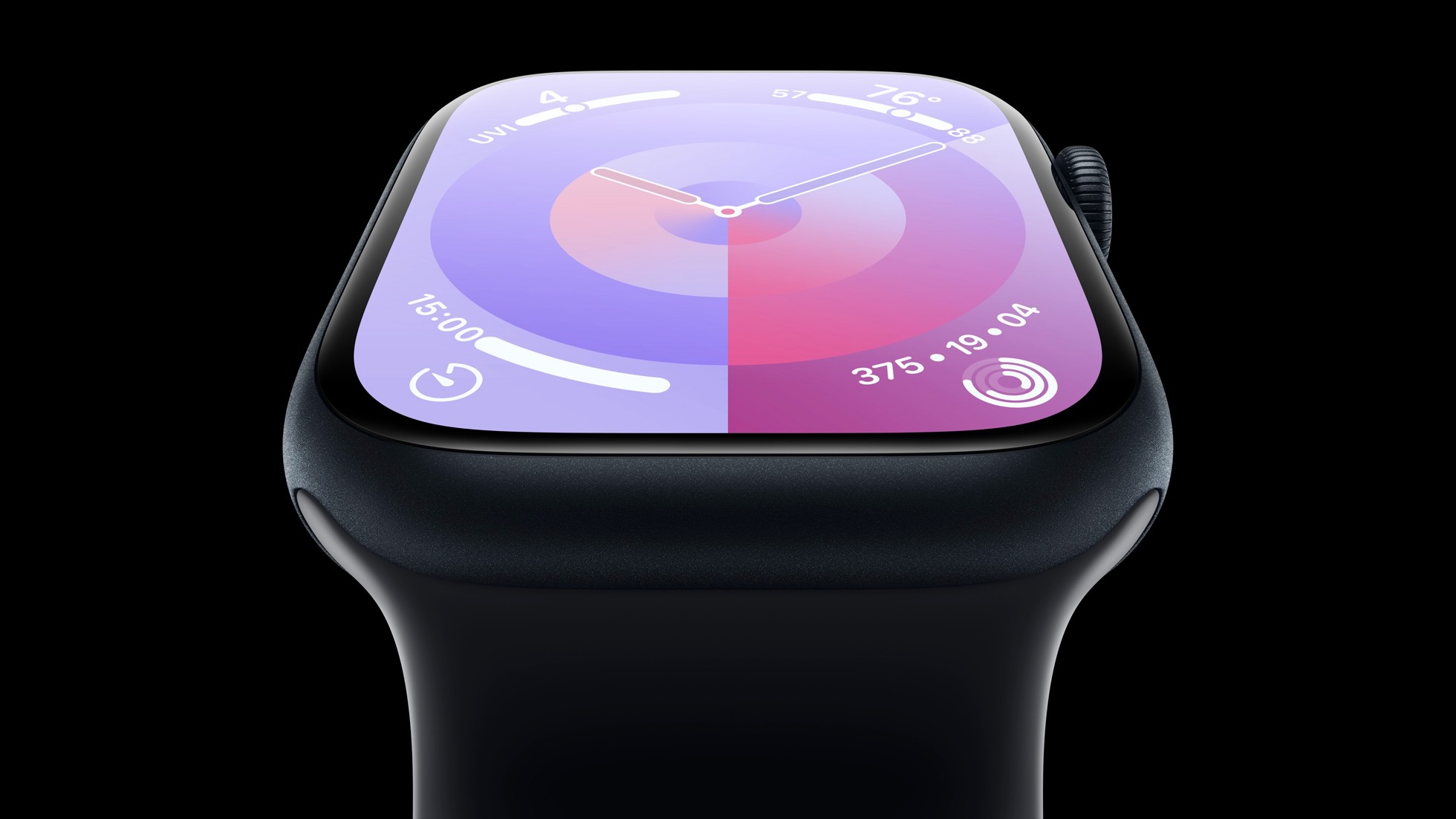
The Galaxy Watch 6 runs One UI 5 Watch based on Wear OS 4, while the Apple Watch Series 9 uses watchOS 10. Samsung provides four years of software support for its watches, while Apple typically offers at least five years of support.
The best Wear OS apps and the best Apple Watch apps have plenty of overlap. Even though some developers tend to prioritize Apple Watch apps because of their high sales, you'll still find high-quality apps on Wear OS from major developers, especially as it has become more popular and better supported in recent years.
Apple made a big splash with its new accessibility tool that lets you use hand gestures like a double tap to select things on the Apple Watch. However, you may not have known that Wear OS watches have had similar accessibility tools for years. We wrote a guide on how to use double tap on a Galaxy Watch for reference.
In terms of fitness tools, Apple Fitness has gotten a fairly big revamp in the last couple of years for running and cycling. Samsung closed the gap a bit with the Watch 6, adding personalized heart rate zones for running and a Track Run activity, but it doesn't have the same cycling tools as watchOS 10. Also, Samsung Health doesn't have a paid option like Apple Fitness+ to get more guided workouts tied directly to your watch's health data, if that's something you want.
You get Google Assistant on the Galaxy Watch 6 or Siri on the Apple Watch Series 9. While we're much more partial to Google Assistant, Apple added on-device Siri processing to the Series 9 thanks to the S9 chip revamp; aside from faster responses, Siri can now answer questions related to your Apple Health data. We're excited to see if this new-and-improved Siri closes the gap between it and Assistant.
Apple Watch Series 9 vs. Samsung Galaxy Watch 6: Which is better?
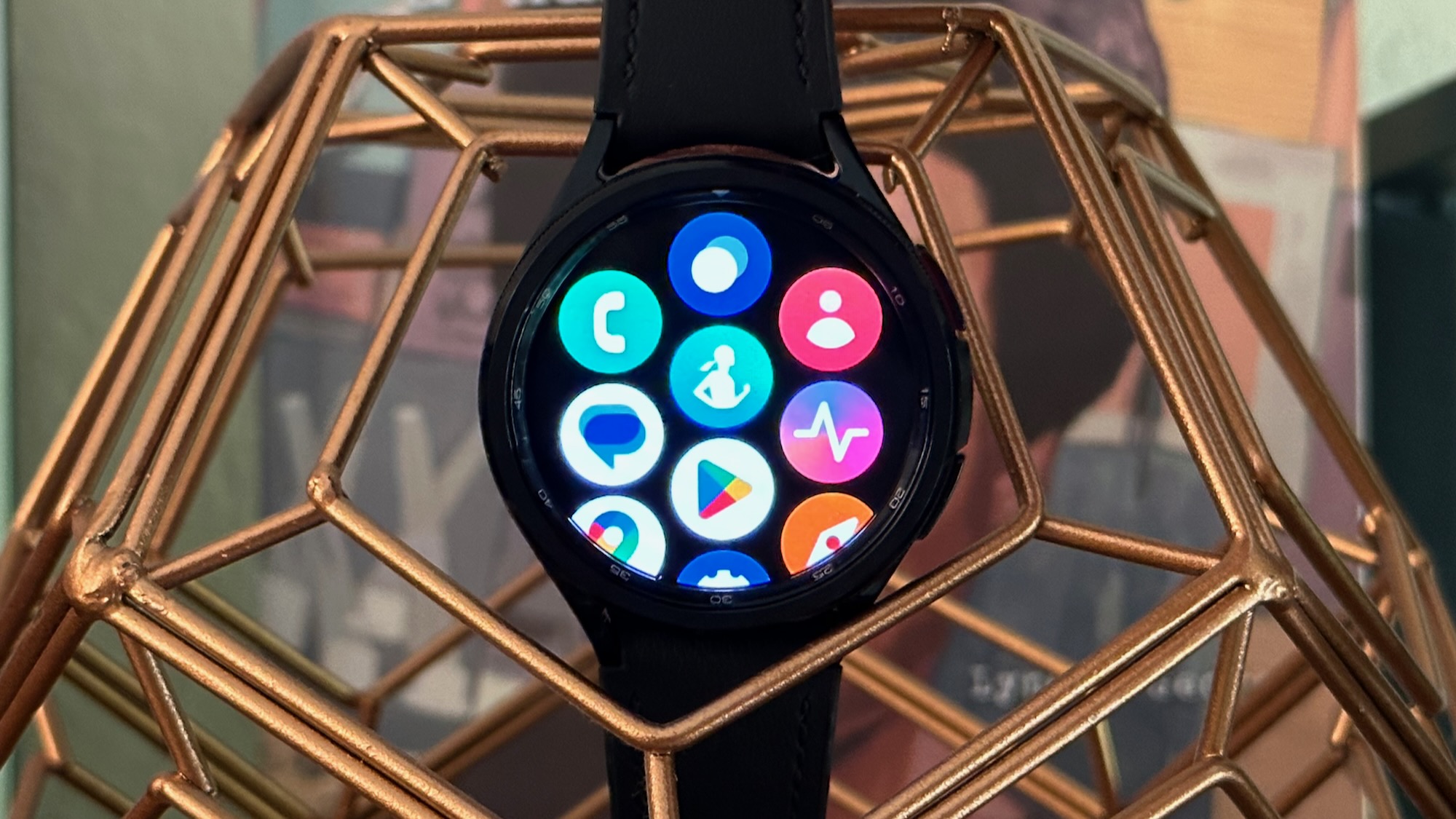
Aside from their distinctive designs, the Galaxy Watch 6 and Apple Watch Series 9 have slowly but surely morphed across generations into very similar devices, offering most of the same perks.
I don't know if Apple will ever come close to Samsung for battery life or find a way to make the squircle design better protected against falls. As for Samsung, I assume it may add more storage and Ultra Wideband in future generations to compete with Apple; it will probably continue to try and close the fitness gap, though Apple won't just sit and wait for Samsung to catch up in this area.
Generally speaking, I think it's safe to say that iPhone and Android phone owners can rest assured that their watch of choice holds up strongly to the competition. The Galaxy Watch 6 is the best Android watch on the market, with its own unique strengths compared to the Apple Watch. And the Apple Watch Series 9 did enough to keep long-time users happy after some stagnant releases in the last couple of years.
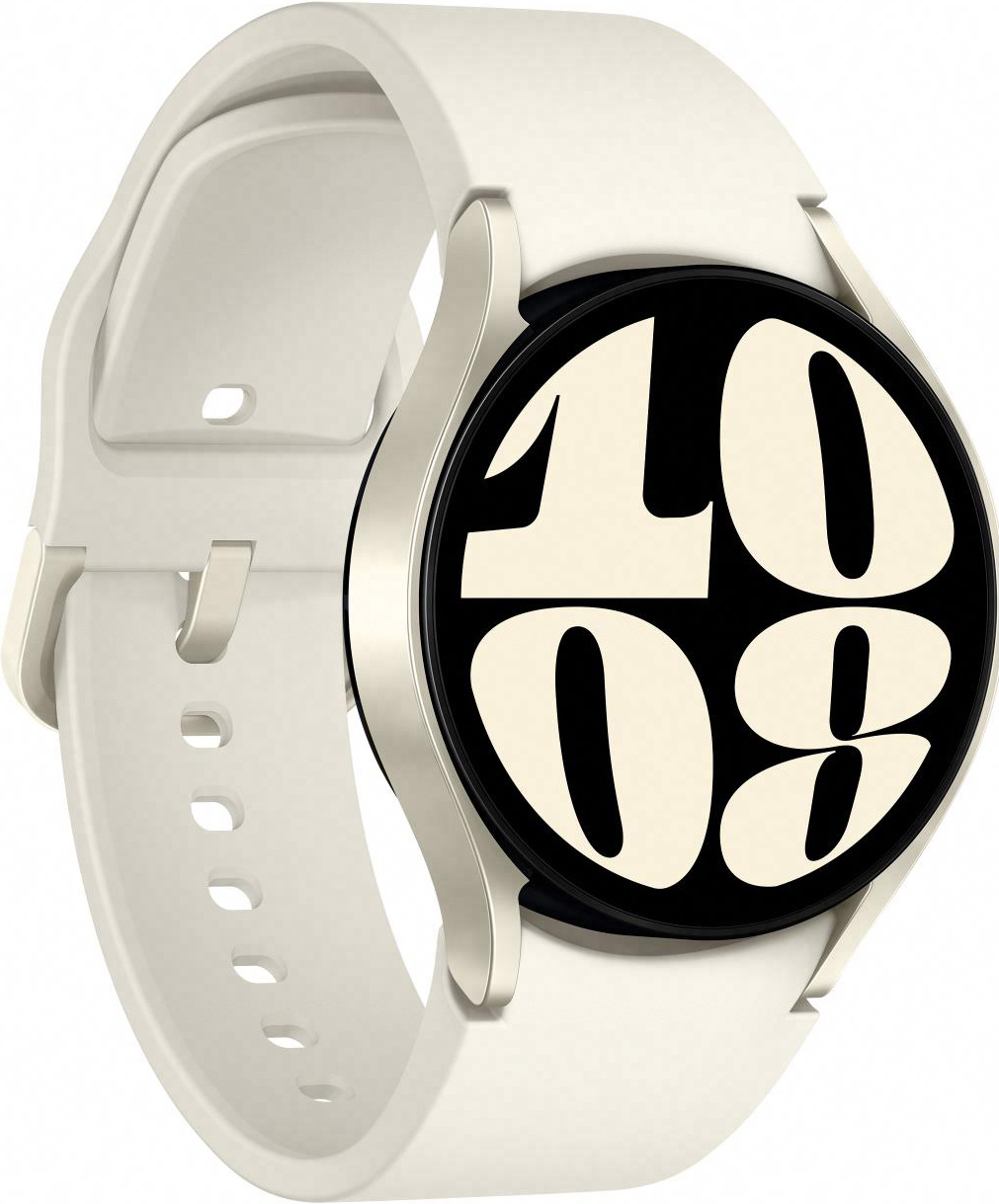
Newer, better
Choose the Galaxy Watch 6 for a speedy and durable smartwatch with longer battery life than the Series 9, or upgrade to the Watch 6 Classic if you want the rotating bezel as an alternative to Apple's crown. Otherwise, don't buy it if you'd ever consider switching to an iPhone.

Next-gen performance
Choose the Apple Watch Series 9 if you've been waiting for a new model with faster performance, a brighter display, and more room for music storage. Upgrade to the Ultra 2 if you want a watch that lasts more than 18 hours, or don't buy either if you'd ever consider switching to Android.
Be an expert in 5 minutes
Get the latest news from Android Central, your trusted companion in the world of Android

Michael is Android Central's resident expert on wearables and fitness. Before joining Android Central, he freelanced for years at Techradar, Wareable, Windows Central, and Digital Trends. Channeling his love of running, he established himself as an expert on fitness watches, testing and reviewing models from Garmin, Fitbit, Samsung, Apple, COROS, Polar, Amazfit, Suunto, and more.
